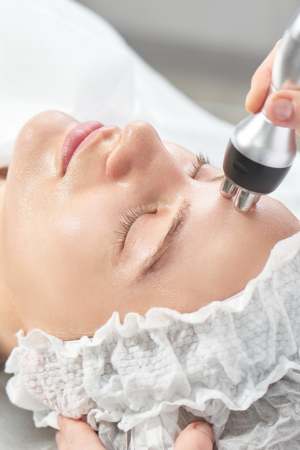
Introduction
Cellulite, a common skin condition affecting approximately 80% of women, is characterized by the presence of dimples or bumps on the skin, typically appearing on the thighs, buttocks, and abdomen. In recent news, a study has emerged suggesting that skin tightening treatments could be an effective approach to combat cellulite, offering hope to those seeking viable solutions.
The Study Details
The study featured in the news article involved a randomized trial with 40 female participants. These individuals were divided into two groups: one receiving a combination treatment of radiofrequency and ultrasound, and the other receiving a placebo treatment. Over the course of five sessions, the radiofrequency and ultrasound group underwent active treatment, while the placebo group received a sham treatment with no energy delivery.
Promising Results
Following the treatment sessions, the group that received the radiofrequency and ultrasound treatment demonstrated significant improvements in cellulite reduction compared to the placebo group. Notably, the most noticeable changes were observed in the thigh area, which is often a problematic region for cellulite.
Mechanism Behind the Effectiveness
According to the researchers involved in the study, the radiofrequency and ultrasound treatment may stimulate collagen production, which plays a crucial role in skin health and elasticity. By increasing collagen levels, the skin becomes thicker and more firm, potentially leading to a reduction in the appearance of cellulite.
Further Research and Long-Term Efficacy
While this study provides preliminary evidence supporting the potential of skin tightening treatments for cellulite reduction, it is important to note that additional research is necessary to confirm these findings and evaluate the long-term effectiveness of this approach. Further studies with larger sample sizes and longer follow-up periods are needed to establish the true extent of the benefits and to address any potential side effects or limitations.
Consultation with Professionals
If you are considering skin tightening treatment for cellulite, it is vital to consult with a qualified healthcare professional, such as a doctor or dermatologist, to determine if this treatment is suitable for your specific needs. They can provide personalized advice, assess potential risks, and guide you towards the most appropriate course of action.
Conclusion
The emergence of this study indicating the potential effectiveness of skin tightening treatments in reducing cellulite marks a significant development in the field. With promising initial results and the stimulation of collagen production being a key mechanism at play, individuals struggling with cellulite may have renewed hope for improved skin appearance. However, more extensive research is essential to establish the long-term efficacy and safety of these treatments. Seeking professional advice remains paramount in making informed decisions regarding cellulite treatment options.


